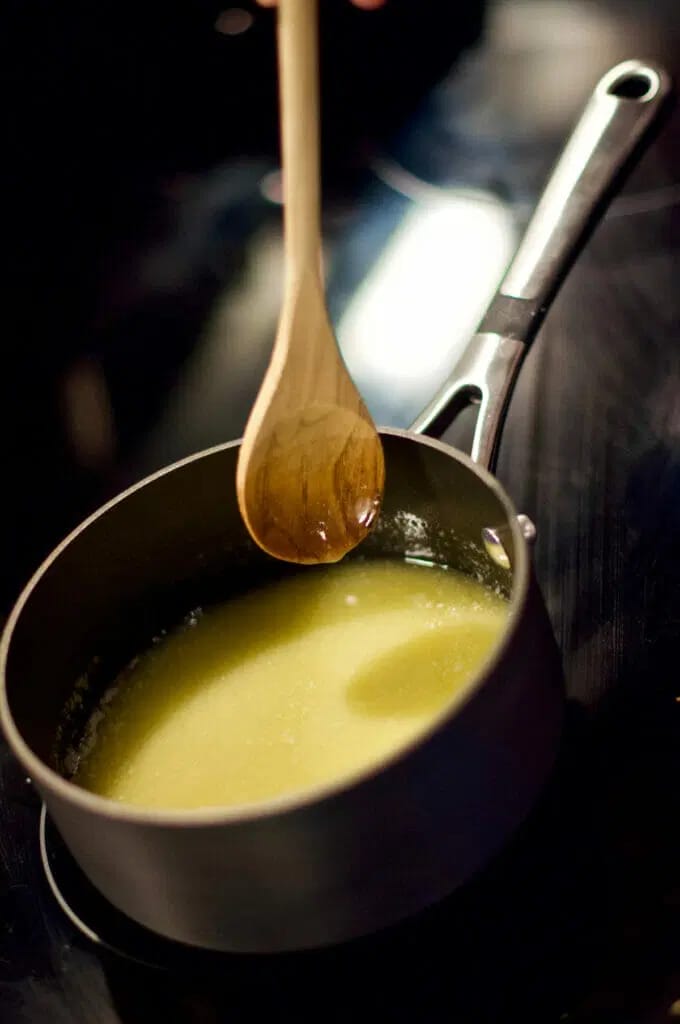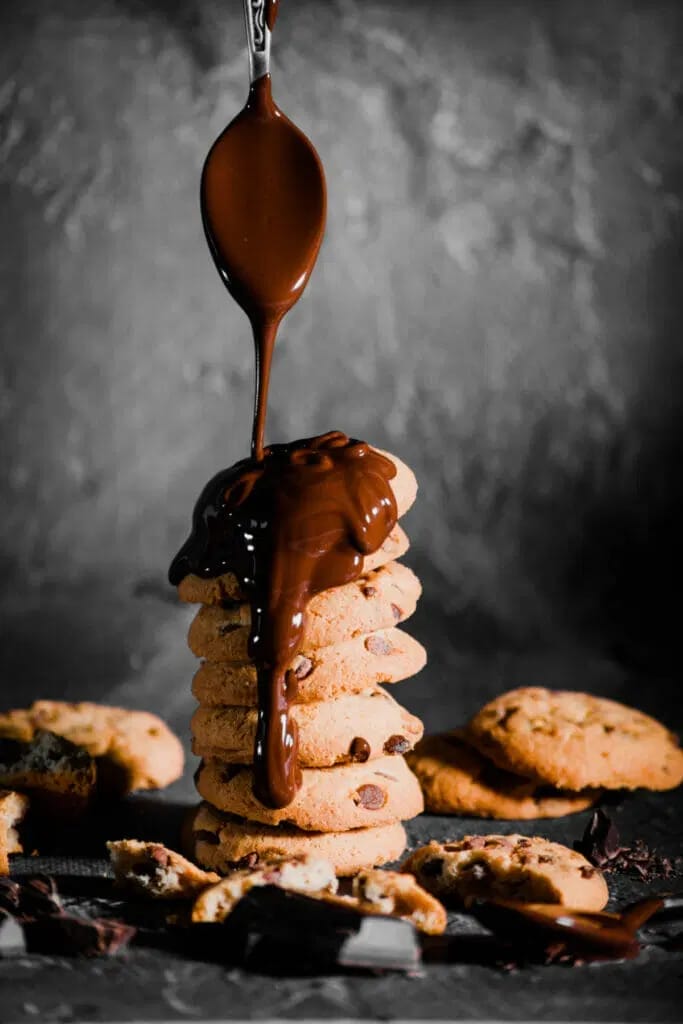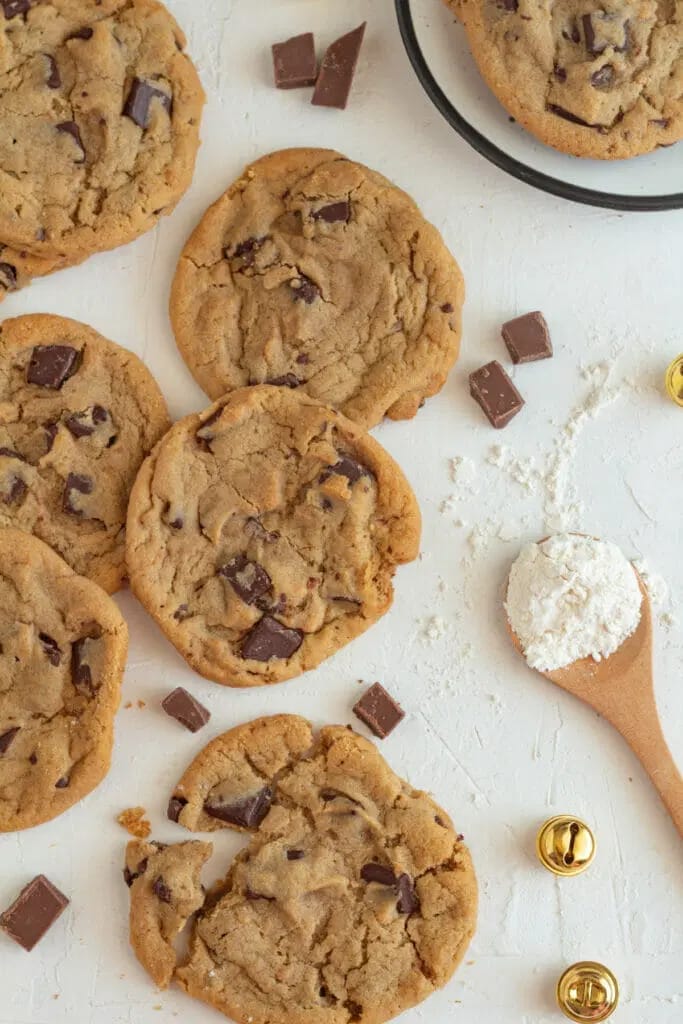As an Amazon Associate, I earn from qualifying purchases. In addition, I participate in several other affiliate programs that allow me to earn while I recommend products I love.
There’s something truly magical about the aroma of freshly baked cookies wafting through the kitchen.
While a cookie recipe may call for a variety of ingredients, one stands out as the key to achieving that perfect taste and texture: butter.
In this blog post, we’ll explore the crucial role of butter in cookie baking.
From flavor and richness to texture and browning, we’ll delve into the secrets of why butter is a vital ingredient that makes cookies simply irresistible, including the role of butter in cookies and the answer to the question, “what does butter do in a cookie recipe?”

The Function of Butter in Cookie Baking
What does butter do to a cookie?
Butter plays multiple essential roles in creating delectable cookies. Let’s take a closer look at each aspect.

1. Flavor and Richness
One of the most noticeable contributions of butter to cookies is its flavor and richness.
Butter brings a distinct, creamy, and slightly nutty flavor to cookies.
It enhances the overall taste, creating a harmonious blend with other ingredients like sugar, vanilla, and spices.
The natural flavors and aromas of butter add a delicious richness that elevates the cookie’s flavor profile.
Additionally, using salted or unsalted butter can further influence the taste, with salted butter providing a subtle saltiness that balances the sweetness of the cookie, while unsalted butter allows for better control of the overall salt level.
2. Texture and Structure
What is the purpose of butter in cookies?
Butter significantly influences the texture and structure of cookies, resulting in their desired characteristics.
The creaming method, which involves beating softened butter with sugar, is a common technique in cookie baking.
Creaming incorporates air into the mixture, creating tiny air pockets that expand during baking.
This process contributes to a tender and light texture in the final cookies.
The fat content in butter provides moisture to the dough, resulting in a tender and melt-in-your-mouth quality.
Additionally, the consistency of butter affects the spread of cookies during baking.
Softened butter leads to more spread, producing thinner and crisper cookies, while chilled butter reduces spread, resulting in thicker and chewier cookies.
3. Browning Process
Why use butter in cookies?
Butter also plays a vital role in the browning process of cookies, enhancing their appearance and flavor.
The proteins and sugars present in butter interact during baking, resulting in the Maillard reaction.
This reaction occurs when the proteins and sugars undergo complex chemical changes under heat, leading to the development of desirable aromas, flavors, and browning.
Butter’s milk solids can also undergo caramelization, contributing to the depth of flavor in the cookies.
The composition of butter, including its fat content and milk solids, influences the degree of browning achieved during baking.
With the right baking temperature, butter helps achieve that perfect golden-brown color that enhances the visual appeal of cookies.
Butter Substitutes and Alternatives

Do cookies need butter?
While butter is a beloved ingredient in cookies, there are alternatives available for various dietary needs or preferences.
Margarine or vegetable shortening can be used as substitutes for butter in cookie recipes.
However, it’s important to note that these alternatives may affect the flavor and texture of the cookies.
For vegan or lactose-free options, oils such as coconut or canola oil can replace butter.
Non-dairy spreads made from plant-based ingredients can also serve as suitable alternatives.
It’s important to consider the impact these substitutes may have on the overall flavor, texture, and browning characteristics of the cookies, and some experimentation may be needed to achieve the desired results.
Tips for Using Butter in Cookies

To make the most of butter in your cookie baking adventures, here are some helpful tips.
Butter Temperature and Consistency
Use softened butter for creaming with sugar.
It should be pliable but not melted to ensure proper incorporation of air into the mixture.
Proper Creaming Technique
Cream the butter and sugar together until light and fluffy.
This process maximizes the incorporation of air, resulting in a tender texture in the final cookies.
Adjusting Butter Quantities for Desired Results
Depending on the desired texture and spread of your cookies, you can adjust the amount of butter in the recipe.
Using more butter will yield softer and thinner cookies, while using less butter will result in thicker and chewier cookies.

Want more cookie science? Check out these articles!
